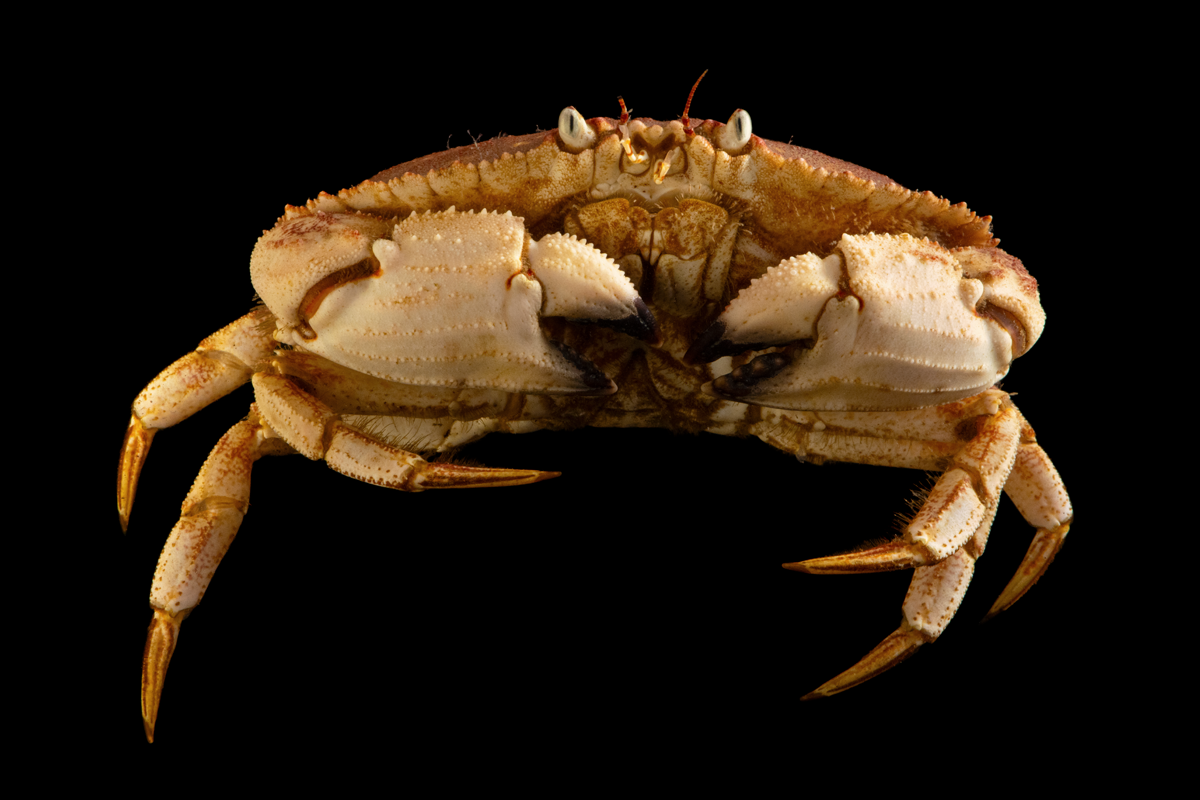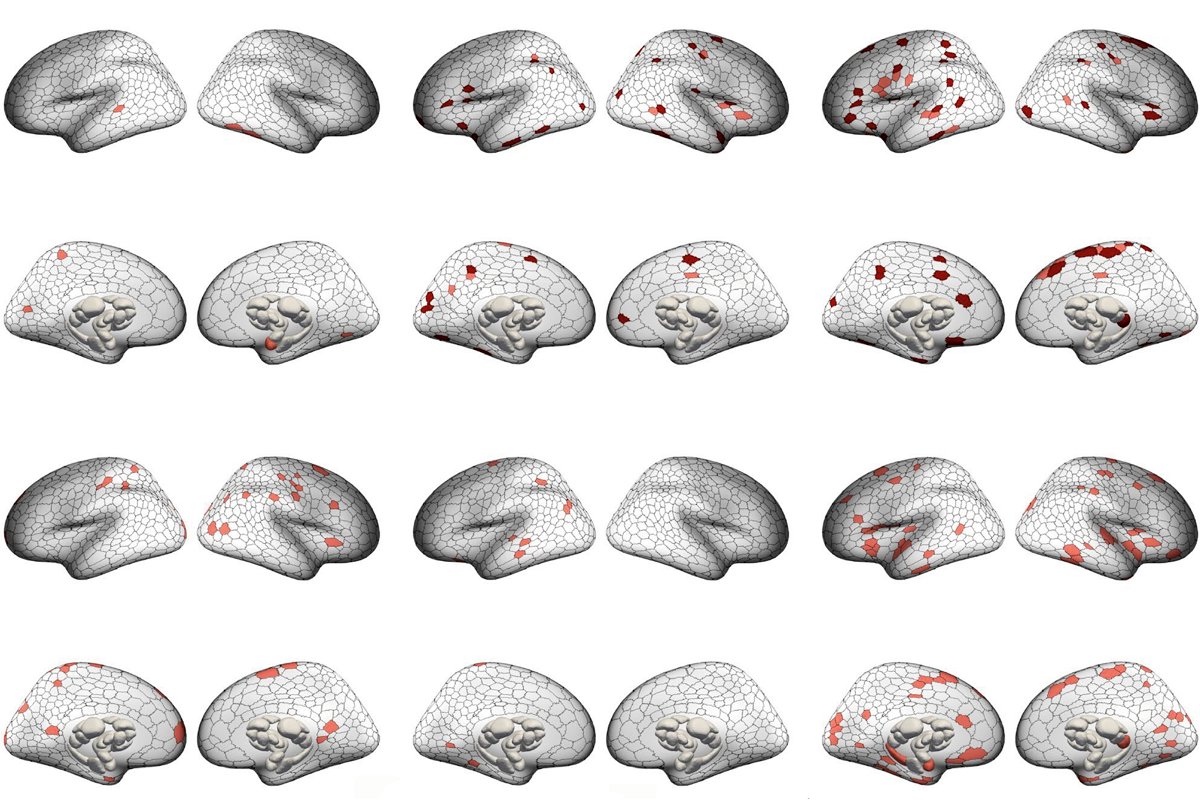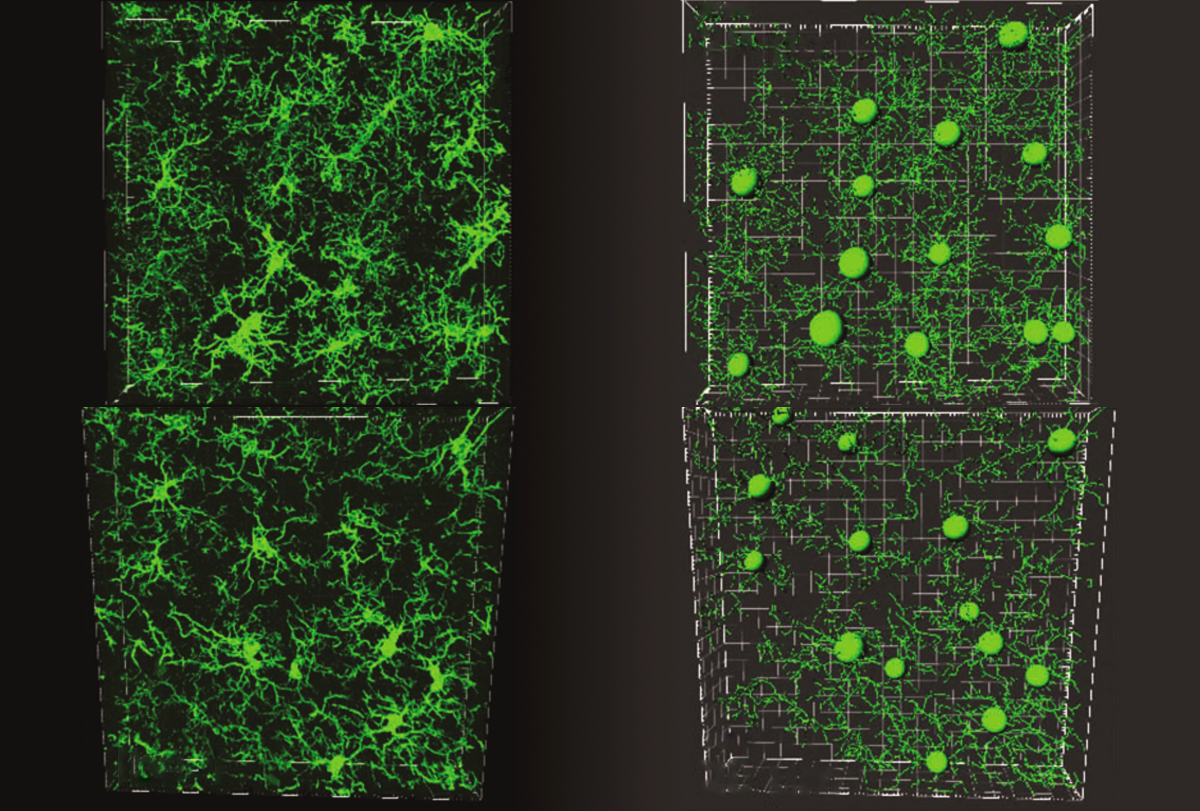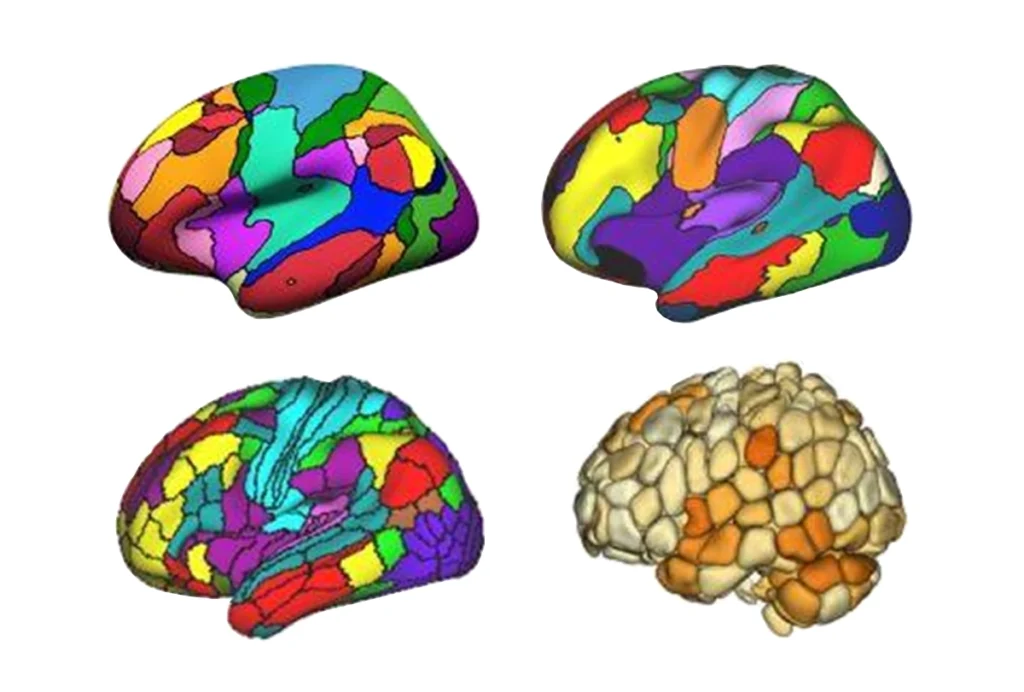At first, Mara Rue thought something must be wrong with her electrophysiology experiment. She was trying to get a cluster of crab neurons in a dish to malfunction by raising the temperature of their saltwater bath. But she had maxed out the rig’s heat at 40 degrees Celsius, and the neurons were still firing rhythmically.
The electrodes recording the cells worked just fine, Rue confirmed. And so instead, the graduate student in Eve Marder’s lab at Brandeis University concluded, there must be something peculiar about these cells.
The neurons had come from a crab’s stomatogastric ganglion (STG) — a circuit that produces rhythmic activity to control digestion. For decades, Marder’s lab has sourced Jonah crabs, or Cancer borealis, for experiments from the waters around Boston, Massachusetts. The team knew from work in 2012 that typically, cells from the STG in these crabs temporarily slip out of sync and “crash” at temperatures above 23 degrees Celsius.
But Rue was not able to get her crab’s STG neurons to crash at all — possibly, she and Marder mused, because the animal had acclimated to the unusually warm ocean temperatures around Boston that year.
That hunch proved true when the two looked back through the lab’s 20-some years of data: Warmer ocean temperatures were linked to higher average crash points. They published the findings in the Journal of Neuroscience in 2021.
“In some ways, it was kind of a hopeful study, because it says that these animals can adapt over a short period of time,” says Rue, who is now a scientist at the Allen Institute.
But the findings could also point to more permanent species changes, she says — perhaps less resilient crabs had neurons that could not weather the new conditions, and those animals died in the water before they could reach the lab. “We may be losing some variability in the population.”
That concern around how climate change could disrupt neural systems across animal populations has given rise to a new area of research at the intersection of neuroscience and ecology. A minisymposium at the Society for Neuroscience meeting last November brought some of the issues different systems and species are facing to the fore. And new research from Marder and others has revealed some of the limits of STG resilience, with implications for other neural systems.
The changing environment has, in many ways, offered up a massive natural experiment, says Gabrielle Gutierrez, assistant professor of neuroscience and behavior at Barnard College, who organized the minisymposium. “We might actually learn something about the brain that wasn’t possible before we messed everything up. It’s sort of exciting, even though it’s depressing at the same time.”
M
uch in the same way heart cells activate at precise rhythms to pump blood, STG neurons fire in a particular pattern to contract the muscles in a crab’s gut and filter its food. The different neurons that produce the pattern are so stereotyped in their responses that each cell type involved can be identified by its electrophysiological output, says David Schulz, professor of biological sciences at the University of Missouri, who was a postdoctoral researcher in Marder’s lab.A mix of ion channels shapes that output, but the exact channel makeup of each cell varies from crab to crab, according to voltage clamp recordings and measurements of mRNA expression levels that Marder’s lab reported in the early 2000s. Still, the ratio of certain subsets of channels remains stable across individuals, the team found; there were some constraints.
“That was, I think, a real epiphany in the field,” Schulz says.
The different solutions the crabs arrive at provide them with resilience to short-term, moderate temperature fluctuations, as well as the ability to adapt to longer-term changes, Marder and her colleagues discovered in 2012. But when the water temperature spikes beyond that range, each animal’s system crashes in distinct ways, the team found: Depending on the individual crab, different cell types crash first, starting at different elevated temperature points.
That built-in diversity makes a species more likely to survive in a changing environment, says Wolfgang Stein, professor of neurophysiology at Illinois State University, who also studies the STG. Some crabs may not be able to tolerate the change, but others will be well suited for it.
In some situations, wider fluctuations in ocean temperature could make animals more robust, helping them stretch the limits of what they can tolerate, much in the way that exercise strengthens a person’s muscles, Marder says.
Stein and his colleagues demonstrated this in two invasive species of crabs — Hemigrapsus sanguineus and Carcinus maenas — that, unlike the Jonah crab, live in tidepools where they regularly experience extreme temperature fluctuations. Perhaps as a result, both produce steady STG rhythms across a wider temperature range than the Jonah crabs do.
But when a species is pushed to the brink, that resilience can falter, as Stein found in that same study: Crabs that were acclimated in the lab to extreme temperatures had less variability in their individual crash patterns than those exposed to a more typical range. Because everything in the crabs’ STG cells — from ion channels to enzymes — has its own response to changing temperature, there are a limited number of ways to keep the system balanced on all levels, Stein says. “We think that as the animal gets challenged more, they have fewer solutions available.”
T
hat balance is even further challenged when multiple aspects of the environment change at once, which is what happens in the real world. When ocean temperatures rise, for example, the water’s pH decreases and oxygen levels increase. Neurons must adapt to those chemical shifts as well.In fact, changes to temperature and pH affect the function of the STG in distinct ways, Marder and her colleagues showed in 2021. With each additional change, a system may struggle to adapt. For example, extreme ocean temperatures make crabs’ nervous systems less resilient to changing pH, according to a study that Marder and her colleagues published last month.
“You have a whole series of nested effects, which are, again, adding stress to the animal,” Marder says. And those nested effects also make it difficult to parse out how neurons in the STG acclimate to changing temperatures in the first place.
When it comes to short-term temperature shifts, crabs have ways of increasing their robustness, including by releasing neuropeptides that keep the STG rhythm active over a wider-than-usual range of temperatures. But longer-term adaptations require a different mechanism. “I don’t think anyone has the foggiest idea” how it happens, Marder says, because when temperatures rise or fall, everything in the cell is potentially affected.
“There’s many, many different things that are changing simultaneously. And it’s hard to experimentally isolate one change over another,” says Ronald Calabrese, professor of neuroscience at Emory University, who is not connected to the crab research but studies similar rhythmic activity found in leeches. “With temperature change, you’re in a particularly thorny thicket.”
Even without knowing the underlying mechanism, studying the crabs’ individual responses to changing environments can help to reveal why neural systems are set up the way they are, and where their limits lie, Stein says. The properties of some systems, such as those of the crab STG, differ widely across individuals, whereas others may vary less — whether because of differences in environmental challenges or in how precisely the system needs to function.
“The output always needs to be there,” he adds. “But how much wiggle room is under the hood?”






